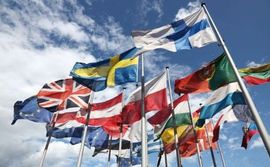 2011 was a fantastic year in international search marketing. We saw expansive campaigns, better structures, and even new industries pour into the global scene.
2011 was a fantastic year in international search marketing. We saw expansive campaigns, better structures, and even new industries pour into the global scene.
Then, last August, Google threw in a wrench and rolled out Panda internationally, which has really proved to be quite challenging when you have a .com with either a subdomain or subdirectory structure.
Everything probably would have been fine if it wasn’t for companies that had more then one national presence. Problem is, most known brands are international. When we look at brands and businesses based out of the U.S., especially in the EU, they’re almost all international and most don’t have independent ccTLDs in the markets they target.
Another problem with multilingual and multi-country targeted sites: many of them share similar content or translated similar content with perhaps a few currency signals and title tags differences. The combination of duplicate looking content and a directory/subdirectory structure causes sites be stuck in the Panda filter.
Google pulled out a large roll of duct tape to fix the problem with multiple language version websites, wrote “hreflang” on one strip and wrote “canonical” on the other strip.
Basically, Google is telling us that we should use a regional subtag in our head tag on each URL to help Google’s spider figure out what kind of content is on each page and where it is intended. Once this is done, Google will consider that the content is intended for that region.
Hreflang
The hreflang attribute (hreflang: rel=”alternate” hreflang=”x”) rules in a nutshell:
- Applies to any users from different parts of the world, with content translated in the native language to target that region.
- Used for multilingual websites using substantially the same content on all web pages (e.g., English pages for Australia, Canada, and the U.S.)
- Can specify the language, country, and URLs of content translated for multiple countries.
- Used when:
- You translate only the template of your page (navigation and footer) and main content is still in a single language.
- Pages have broadly similar content within a single language, but are targeted at different regions (e.g., English-language content targeted in U.S., UK, and Australia).
- Content on the web page is fully translated (e.g., have Spanish, French, and English versions of each page).
- How to use rel=”alternate” hreflang =”x”
- If there are multiple language versions of the website, each language must use rel=”alternate” hreflang=”x” (e.g., a page in Spanish must have a rel=”alternate” hreflang=”x” link to the English and French version and the English and French version must include a link pointing to the Spanish site.
(For more information: http://support.google.com/webmasters/bin/answer.py?hl=en&answer=189077)
Canonical
The multilingual canonical tag (rel=”canonical”) tells Google that x URL is the preferred location and the most important translated version of the content of the URL.
Multilingual canonical is:
- Used in conjunction with hreflang.
- Can be used when web pages have the same content in the same language targeting multiple countries.
- Sometimes users are directed to the wrong language.
- The canonical designates the version of content that gets indexed and returned to users.
- Use rel=”canonical” tag on other versions of the webpage.
- When users enter content into search results, users will likely see the URL that corresponds to their language preference.
Putting hreflang and canonical together:
Spanish site is the canonical and contains the following tags:
link rel=”alternate” hreflang=”en” href=”http://en.example.com/” /
English site contains the following tags:
link rel=”canonical” href=”http://es.example.com/” /
French site contains the following tags:
link rel=”canonical” href=”http://es.example.com/” /
(**CAN ONLY BE USED WHEN SPANISH IS THE MAIN LANGUAGE AND ONLY THE TEMPLATE IS TRANSLATED TO ENLISH AND FRENCH)
So Why is This so Challenging?
Since it seems pretty clear that hreflang allows for geo-targeting and rel=canonical allows for de-duplication, why is this so challenging?
“With the canonical, you have to specify the settings on a per URL basis which involves considerably more effort and cost than just using Webmaster Central,” explains multilingual search expert and blogger Andy Atkins-Krüger of Webcertain. “However, the rel=alternate hreflang has an advantage that it can be deployed alongside ccTLDs or local domains which prevents people thinking they have to use a dot com to target when in fact ccTLDs achieve better results.”
In the end, if you’re an SEO in charge of international search efforts, you may find yourself very busy this year either adding tags, cleaning up translations, or converting websites into standard ccTLDs.
If you’d like to add more examples, corrections, ideas and best practices around the uses of the new architecture recommendations, please do so in the comments.
 2011 was a fantastic year in international search marketing. We saw expansive campaigns, better structures, and even new industries pour into the global scene.
2011 was a fantastic year in international search marketing. We saw expansive campaigns, better structures, and even new industries pour into the global scene.